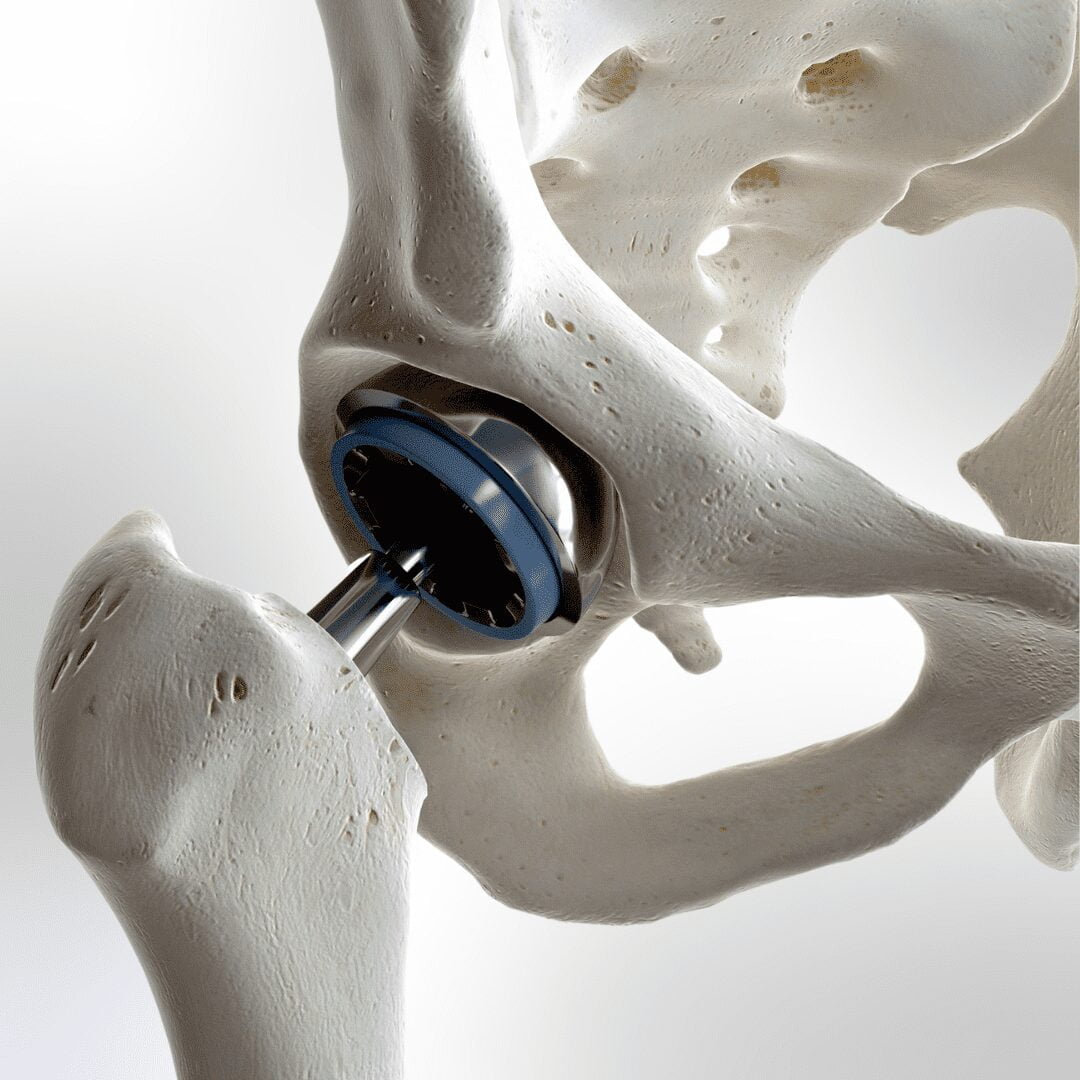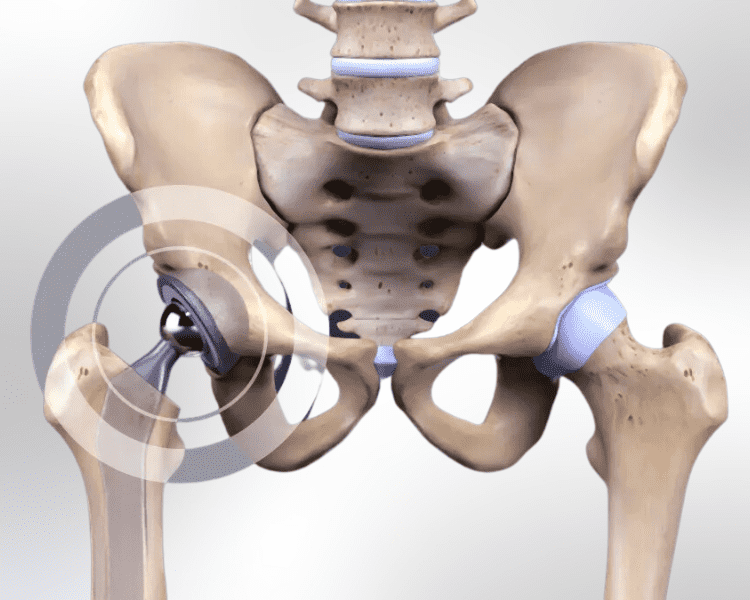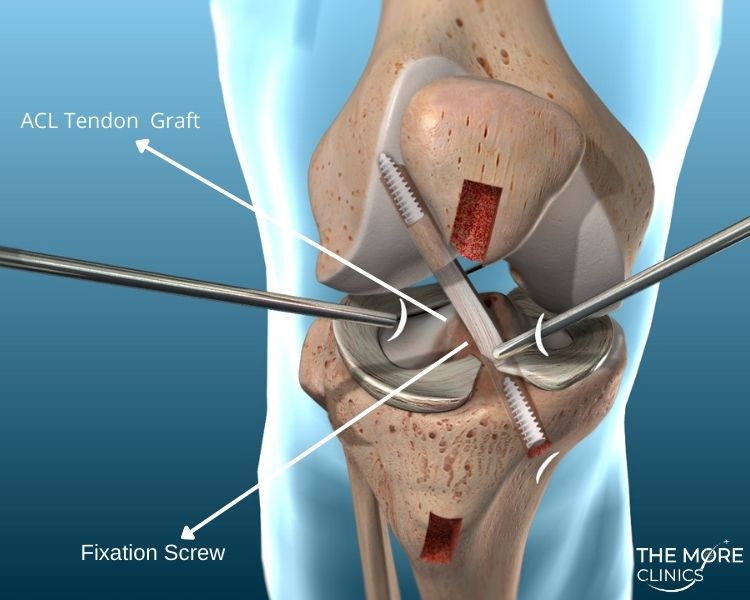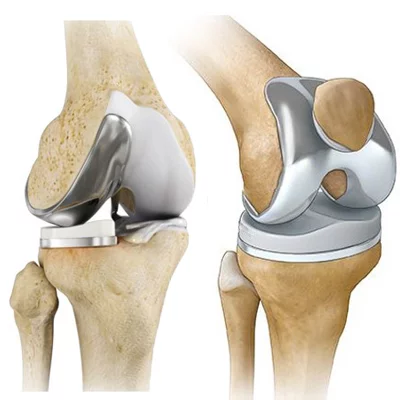Hip Replacement Surgery Guide
Hip Replacement Surgery
Hip replacement surgery is a common procedure performed to repair a damaged hip joint. By replacing worn-out parts with artificial joints made of metal, ceramic, or plastic, patients can experience improved mobility and reduced pain. In this guide, The More Clinics will provide you with all the necessary information about hip replacement surgery, including types, candidates, alternative treatments, benefits, risks, step-by-step procedure, hip replacement recovery timeline and costs. Additionally, we will explain why hip replacement Turkey is a popular and qualified option for affordable hip replacement surgeries.

What is Hip Replacement Surgery?
Hip replacement surgery, also known as hip arthroplasty, is a surgical procedure in which the damaged or diseased parts of a hip joint are removed and replaced with artificial components. The goal of this surgery is to relieve pain, improve function and restore mobility. The hip joint is one of the largest weight-bearing joints in the body and is crucial for daily activities such as walking, sitting, and standing. When damaged due to conditions such as osteoarthritis, rheumatoid arthritis, or injury, a hip replacement may be necessary to improve quality of life.
In the United States alone, over 2.5 million individuals have undergone total hip replacements. Typically, a hip replacement surgery is recommended when other conservative treatments fail to provide relief. Although recovery can take up to 12 weeks, many people who have undergone this procedure enjoy the benefits for the rest of their lives.
Types of Hip Replacement:
There are two main types of hip replacement surgeries: total and partial.
- Total Hip Replacement: During this procedure, the damaged parts of the hip joint are replaced with a ball-and-socket prosthetic made of metal, plastic or ceramic.
- Partial Hip Replacement: In this case, only the damaged femoral head (ball) is replaced with a prosthetic, while the socket remains intact.

Who are Suitable Candidates for Hip Replacement Surgery?
Candidates for hip replacement surgery typically exhibit the following characteristics:
- Persistent Hip Pain: Despite receiving conservative treatments, such as medication, physical therapy, or use of walking aids, the individual continues to experience hip pain.
- Reduced Mobility: Difficulty in performing everyday activities, like walking or climbing stairs, indicates a need for hip replacement.
- Pain During Rest: Hip pain that continues even during periods of rest or disrupts sleep.
- Stiffness: A stiff hip joint that limits the ability to move or lift the leg.
- Ineffective Non-Surgical Treatments: Non-surgical treatments are no longer effective in mitigating the pain and improving joint function.
- Impact on Quality of Life: When hip pain and stiffness significantly affect an individual’s quality of life and mental health.
Health conditions and issues that can damage your hip joint enough to require a hip replacement include:
- Osteoarthritis: Wear-and-tear arthritis that damages the cartilage covering bone ends.
- Rheumatoid Arthritis: Autoimmune disorder causing inflammation and damage to the hip joint.
- Hip Dysplasia: Abnormal hip joint formation from birth.
- Osteonecrosis: Insufficient blood supply leading to hip joint bone collapse.
- Bone Tumors and Cancer: Rare cases where tumors or cancer damage the hip joint.
In some cases, hip replacement surgery may not be the only option. For individuals with less severe symptoms or those who are not suitable candidates for surgery, alternative treatments such as physical therapy, medications, injections, or lifestyle changes may provide relief. However, it is essential to consult with an orthopedic
Alternative Treatments for Hip Pain:
In some cases, surgery may not be necessary to alleviate hip pain. Your healthcare provider may recommend alternative treatments such as:
- Physical Therapy: A personalized exercise program can help strengthen the muscles around the hip joint and improve mobility.
- Medication: Over-the-counter pain relievers or prescription medications may be prescribed to reduce inflammation and provide temporary relief.
- Weight Loss: Excess weight puts added pressure on the hip joint, so losing weight can help alleviate pain and improve joint function.
- Lifestyle Changes: Avoiding activities that worsen hip pain, using assistive devices such as canes or walkers, and making ergonomic changes at work can also provide relief.
Benefits of Hip Replacement Surgery:
Hip replacement surgery offers numerous benefits to patients suffering from severe hip pain and mobility issues. Some of the potential benefits include:
- Pain Relief: The primary goal of hip replacement surgery is to alleviate chronic hip pain caused by various conditions.
- Improved Mobility: Hip replacement can significantly improve joint function, allowing individuals to perform daily activities with ease.
- Better Quality of Life: With reduced pain and improved mobility, patients can enjoy a better quality of life and return to activities they once avoided.
- Long-Term Results: Many people experience long-term benefits from hip replacement surgery and may not need additional surgeries in the future.
Risks of Hip Replacement Surgery:
As with any surgery, hip replacement carries some risks. These may include:
- Infection: In rare cases, infections can develop around the incision site or deep within the joint after surgery.
- Dislocation of the Joint: Occasionally, the new prosthetic joint may become dislocated due to a fall or sudden movement.
- Blood Clots: Surgery increases the risk of developing blood clots in the legs, which can be dangerous if they travel to the lungs.
- Nerve Damage: Nerves around the hip joint may sustain damage during surgery, leading to numbness or weakness.
Hip Replacement Surgery: A Step-by-Step Guide
Hip replacement surgery usually takes between one to two hours, and it involves the following steps:
Administration of Anesthesia: The patient will receive either general anesthesia, putting them to sleep during the procedure, or spinal anesthesia, where they stay awake but don’t feel anything below the waist.
Preparation of the Hip: The surgeon makes an incision over the front or side of your hip, through the layers of tissue. The hip joint is then exposed by moving the hip muscles aside.
Removal of Damaged Hip: The damaged and arthritic bone is removed from the hip joint. This includes the femoral head (the ball) and the damaged cartilage from the socket.
Implanting the Prosthesis: The surgeon places the new hip implant made of metal, ceramic, or plastic. This will include a cup implant in the hip socket and a stem that fits into the femur, topped by a ball that fits into the cup.
Repositioning of Muscles and Tissues: Once the prosthesis is in place, the surgeon repositions the muscles and tissues around the new hip.
Closing the Incision: The surgeon closes the incision with stitches or staples and applies a dressing to the wound.
This procedure may vary based on the specific needs and condition of the patient. After surgery, the patient will go through a recovery process, which includes physical therapy to regain strength and mobility. Patients typically start walking with the aid of a walker or crutches within a day or two after surgery.
Hip Replacement Surgery Recovery Timeline: What to Expect
The recovery period after hip replacement surgery is a gradual process. The timeline may vary based on individual health factors and the person’s overall strength and fitness. Below is a general timeline of what you can expect after hip replacement surgery.
- Day 1: On the first day after surgery, you will likely start physical therapy. You will be encouraged to stand and begin walking with the aid of a walker or crutches.
- Week 1: You will continue physical therapy, gradually increasing your mobility. Depending on your progress, you may be discharged from the hospital to continue recovering at home.
- Week 2-3: At this stage, you will be able to perform simple activities such as bathing and dressing with little or no assistance. You’ll continue physical therapy exercises to strengthen your hip and improve flexibility.
- Month 1-3: You will likely be able to walk without the assistance of a walker or crutches, and you may return to low-impact activities and work, depending on the nature of your job.
- Month 3-6: Your hip strength and mobility should continue to improve, allowing you to return to most of your regular activities.
- 6 Months – 1 Year: By this stage, you should have regained most, if not all, of the function in your hip. You’ll likely be able to perform daily activities with ease and participate in higher-impact activities.
It’s important to note that everyone’s recovery is unique, and the timeline may vary based on individual factors. Always consult with your healthcare provider or physical therapist about your progress and any concerns you may have during your recovery period.
Hip Replacement Costs
The cost of hip replacement surgery can vary significantly due to multiple factors. However, it is worth noting that the average price for this procedure has been steadily increasing over the years. Some of the factors that may affect the cost include:
- Type of Prosthesis: The type and quality of the hip implant used can significantly impact the overall cost.
- Surgeon and Facility Fees: Different surgeons have different fees, and the location and facilities used for surgery can also influence costs.
- Length of Hospital Stay: The length of hospital stay can affect the cost, with longer stays resulting in higher expenses.
- Additional Treatments and Medications: Additional treatments such as physical therapy, medications, and any complications that may arise can also add to the overall cost.
It’s essential to discuss all potential costs with your surgeon before undergoing hip replacement surgery. Some insurance plans may cover a portion of the procedure or offer discounted rates, so it’s important to check with your provider beforehand.
Hip Replacement Cost in the Usa
In the United States, the average cost for a total hip replacement can range from $30,000 to $75,000. However, the cost may vary based on location and individual factors. It’s essential to discuss all potential costs with your surgeon beforehand and explore any available insurance coverage or payment plans.
Hip Replacement Cost in the Uk
In the United Kingdom, hip replacement surgery is available through the National Health Service (NHS) for free. However, private treatment options are also available and can cost anywhere from £10,000 to £20,000. It’s important to consult with your doctor about the best option for you and any potential costs involved.
Affordable and Qualified Option: Hip Replacement Turkey
For those seeking affordable options for surgery, hip replacement Turkey has become a popular destination. With high-quality facilities and experienced surgeons, Turkey offers medical tourists a cost-effective solution compared to other countries. The average cost of hip replacement in Turkey is around $8,000 to $12,000, making it significantly cheaper than the US or UK.
Last Words from the The More Clinics Turkey
In conclusion, hip replacement surgery is a significant procedure that can dramatically improve your quality of life, particularly if you’ve been suffering from hip pain or mobility issues. The cost of this surgery can vary greatly depending on factors such as the type of prosthesis used, surgeon and facility fees, length of hospital stay, and additional treatments or medications.
At The More Clinics, we’re committed to providing high-quality, cost-effective hip replacement Turkey experiences. To learn more about our services and get a personalized treatment plan, please contact us today.
GET A FREE CONSULTATION!
Let’s Start Planning Your Treatment %100 Guarantee Results.


